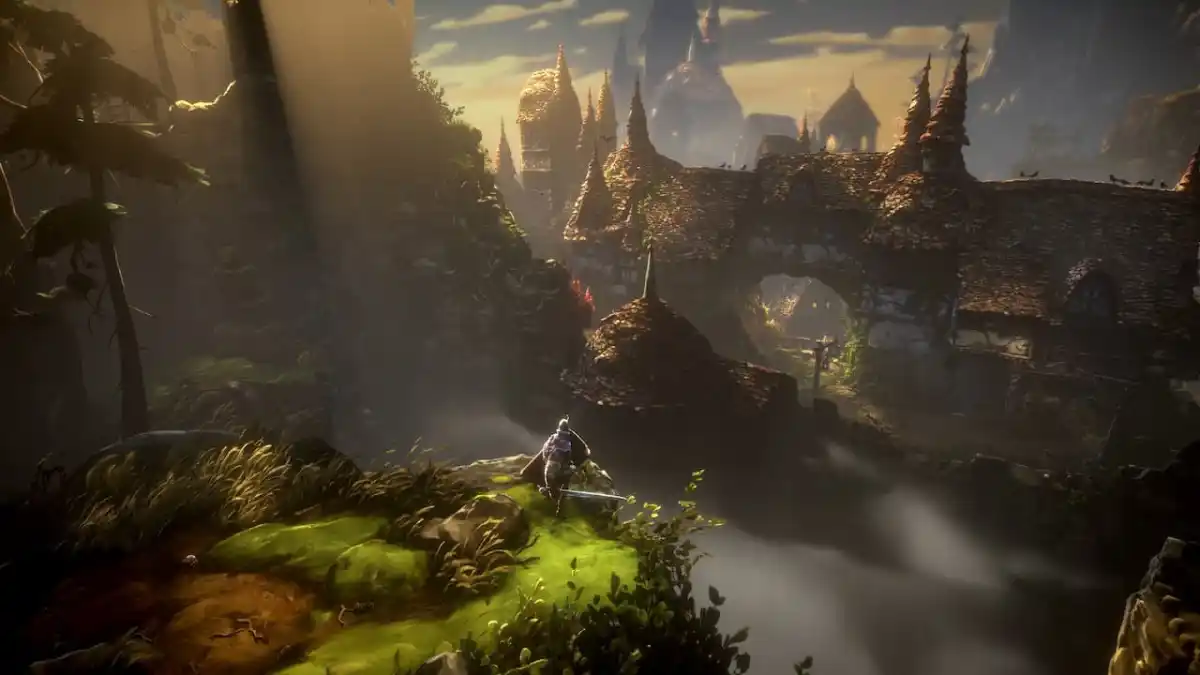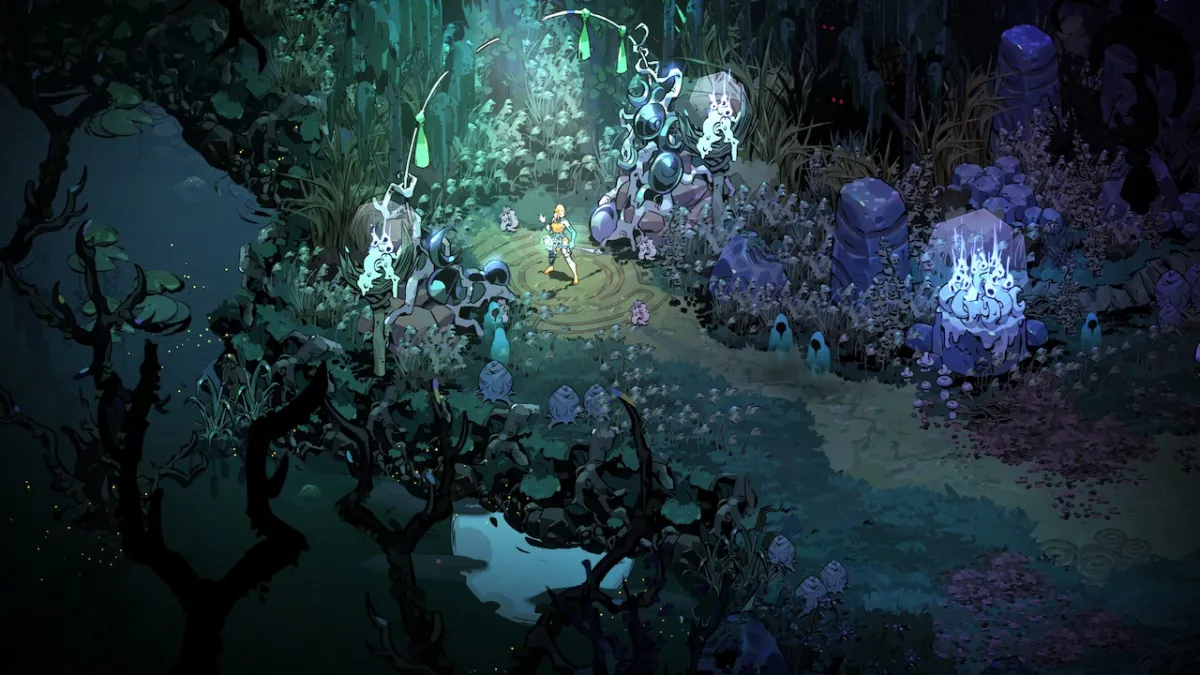With all the recent debate over whether real time strategy games can actually work on consoles – Halo Wars and EndWar argue in favour, Stormrise against – it’s easy to forget that Eidos Hungary made pretty big steps in the right direction back in 2007 with Battlestations: Midway. Billed as a seamless combination of action and strategy gameplay, Midway had some interesting ideas at its core although it also suffered from questionable design in places. Complaints were levelled at the occasional horrific difficulty spikes, the baffling absence of a checkpoint system and the fact that where there should have been a strong central narrative tying the missions together, there was, essentially, nothing. With Pacific, it seems as if Eidos Hungary has taken on-board most of this feedback and adjusted the sequel accordingly, leaving only a few questions unanswered.
Pacific picks up where the first game left off, as US forces push towards Guadalcanal with the eventual invasion of Iwo Jima and Okinawa as the ultimate objectives. However, immediately noticeable to those who played the first game is the addition of a Japanese campaign, basically doubling the size of the game this time around. Now there is an alternate history campaign in which you can guide Japanese forces from the attack on Pearl Harbour to victory in Midway and beyond. It’s undoubtedly a welcome addition and, while the Japanese missions, on the whole, may not be as compelling as the US ones, you can’t criticise the game for a lack of single player content.
While there may be more of it, the core gameplay of Battlestations: Pacific remains essentially the same. For the most part, you are given command of naval and airborne forces and tasked with out-strategising the enemy to achieve primary, secondary and occasionally hidden objectives. Battlestations’ hook, however, is that at any point in the skirmish, you can take control of any of the units under your command and throw yourself personally into the action. This means you can find yourself behind the yoke in a dogfight or on the bridge in naval combat. Or, if you’re not a fan of the action, you can simply spend all your time on the strategic map screen and command your forces from there. It’s this choice that defines the Battlestations series and is the reason why it’s hard not to be impressed by the range of gameplay on offer.
That’s not to say that action and strategy play a strictly equal role in Pacific, however. You’ll soon find out that, if you’re the kind of gamer who finds waypoints and supply queues about as interesting as a Bill Oddie lecture, you may struggle with Battlestations. While the option is there to take control of any unit, if you spend all of your time in the heat of battle and no time on the strategic map, you probably won’t get too far into the game. While it’s undoubtedly a sexier prospect to switch from plane to plane, battling the enemy above the glistening seas, if you don’t keep an eye on your fleet, and your objectives, there’s every chance you’ll fail the mission. You simply can’t ignore the strategy aspect if you want to succeed. And yet, this isn’t really true of the action. You can choose to spend the entire game on the map screen if you wish and you’ll be mostly OK, thanks to the impressive friendly AI and intuitive strategy control system.
But, the real joy of Battlestations is in finding that middle ground between action and strategy. There’s something deeply satisfying about organising your forces, positioning them correctly, assigning targets and then directing the most crucial attacking, or defensive, manoeuvre yourself. Send your destroyers to deal with the smaller enemy vessels while you command a squadron of bombers tasked with taking down the enemy flagship. You can even do that thing your dad used to do and mutter “if you want something doing…” and take over to ensure that things are done to your satisfaction. In fact, sometimes this very approach can mean the difference between winning and losing a battle as taking control of a naval unit in a timely fashion allows you to manually implement repairs and evasive manoeuvres. Factor in the support queues – you’ll have airfields, shipyards and carriers at your disposal at various points throughout the game, meaning you’ll need to create the right units, with the right loadouts to achieve dominance – and you have what is essentially a grand, strategic balancing act with the choice to take an “action break” whenever you please.
{PAGE TITLE=Battlestations: Pacific page 2}
And yet, there are still a few problems with the formula. Sure, many of the issues with Midway have been addressed – there is now a checkpointing system in place meaning no infuriating mission restarts and the difficulty spikes are much less noticeable – but there are still areas in which the game feels underdeveloped. The presentation for one is pretty underwhelming. Somehow Eidos Hungary has managed to make one of the most interesting theatres of World War Two seem quite dull, if the pre-mission briefings, videos and cutscenes are anything to go by. The latter especially, look awfully shoddy in places and, when combined with some of the worst voice acting we’ve heard in ages; mean that you’ll tend to skip straight into the action. There needs to be more of a central narrative holding the game together, something to draw you personally into the atmosphere of battle. It’s not enough to throw the occasional morsel of hammy dialogue into a battle followed by a grainy clip of a boat moving slowly – “Sir, are you sure this is the right idea,” asks whiny subordinate. “Dammit man, it’s the only chance we’ve got! Send that ship moving slowly towards the enemy” is a piece of dialogue that I’ve just made up but is probably in the game. As it stands, Pacific is just a series of skirmishes held together by post-mission voice-overs and short, pre-mission cutscenes.
There are also some issues with the mission structure. The game is clearly at its best when you’re in a large-scale air and sea battle, with a lot to balance in order to succeed. And yet all too often, the game throws up a mission in which you’re limited to a single squadron and given a task to complete. They’re nowhere near as fun as the sprawling battles and don’t really sit well with the rest of the game.
On a technical level, there’s also the notion that Battlestations: Pacific doesn’t feel as robust as it ought to. While the visuals have certainly improved since Midway, with much nicer water effects and plane cockpits adding some style to the game, it seems as if this may have come at the expense of performance. Find yourself in a busy, frenetic battle and you’ll notice the framerate plunge on occasion. You’ll also have to put up with some pretty hefty load times should you have to restart from a checkpoint or, even worse the beginning of a mission.
However, the majority of the game’s problems centre around the single player game and when you take it online, these become much less significant. The multiplayer side of the game is pretty versatile and makes for some compelling online conflicts. While Escort, Siege and Duel modes offer up conventional defend, attack and deathmatch gameplay respectively, two new modes are the most impressive. Competitive sees players on the same team although working against each other to see who can amass the highest score through destroying enemy units. But, it’s Island Capture which is the star of the show in Pacific. Players are divided into two teams of up to four players each and are tasked with capturing islands on the map. Each team has a point allocation which they must use to deploy the right kinds of units at the right time. The battles in Island Capture are fast, frenetic and, most of all, fun and it’s great to come to the aid of your teammates when they’re taking punishment. The game will even make up the numbers with bots if you can’t find a full server.
Fans of Battlestations: Midway are undoubtedly going to enjoy Pacific. It has a better single player campaign, complete with checkpoints, it looks prettier, the multiplayer game is fantastically involving and yet the core gameplay remains intact. Battlestations is about offering the player the choice to combine strategy and action and it does that very well. However, there are still areas for improvement. For one, while the action controls are entirely functional, they’re not particularly immersive and don’t really match up well against dedicated action games. Coupled with the technical issues mentioned earlier, they occasionally make the game feel a little unresponsive although never to the point of tedium. If Eidos Hungary can get the game running a little smoother post-release, Battlestations Pacific will undoubtedly become a better game. As it stands, it is a compelling mixture of strategy and action, with a large (if not cohesive) single player game and an excellent multiplayer component.


